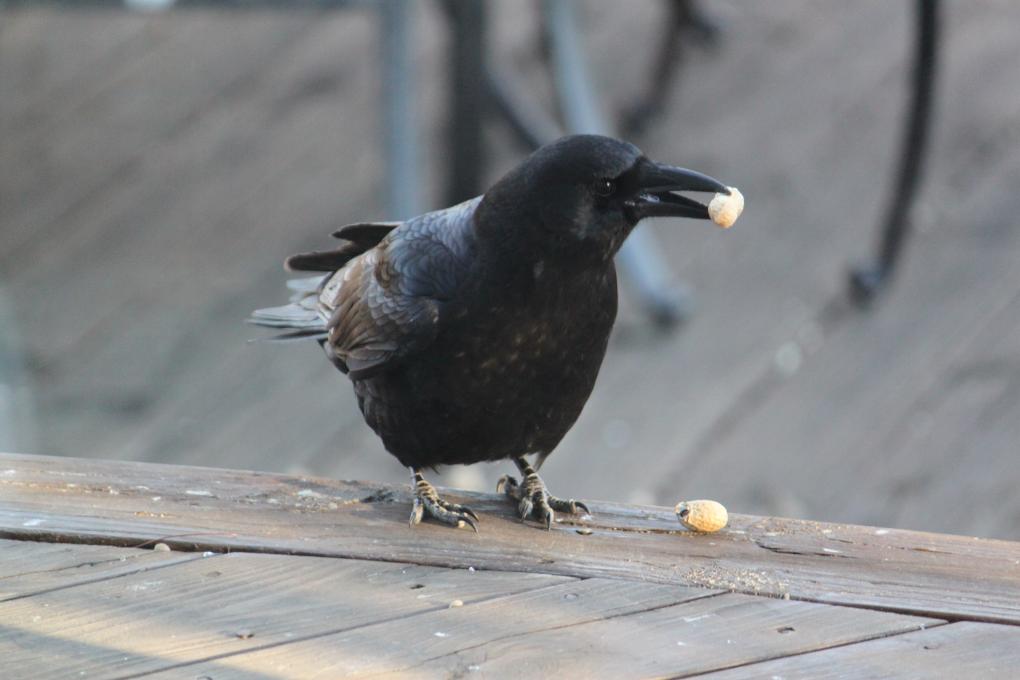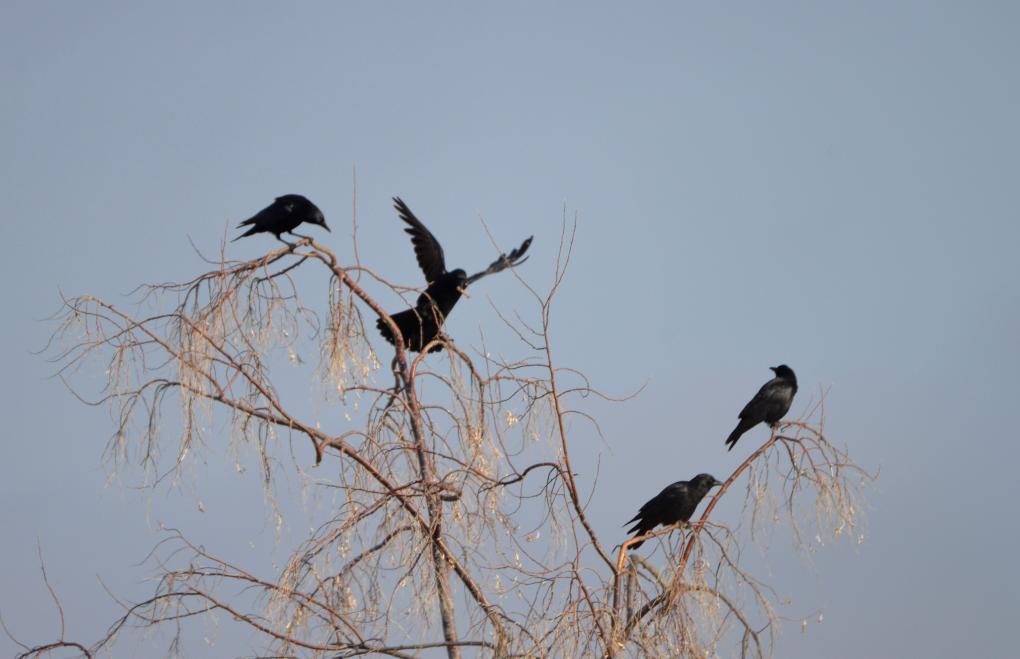The Cornell Lab Bird Academy › Discussion Groups › Anything but Common: The Hidden Life of the American Crow › Crow Not Crow
-

-
Yes. I am confident. Crows are more common and have more agility than other black birds in my area.
-
I am pretty comfortable with telling the difference between Ravens and Crows. In pictures it can be difficult. But when I see them in person, it's pretty easy, especially when they are making noise. LOL
-
They look so similar. I have trouble at times identifying from the photos
-
I am pretty confident. Definitely easier when they are making noise though. Then it is quite clear. I am surprised that the Raven map did not indicate ravens where I live (finger lakes region, NY) because I have ravens every spring. Perhaps they are traveling through during spring migration? The crows are quite inhospitable to the Raven that dare come into area.
-
Grackles have a yellow ring around their eyes and their feathers are almost iridescent. Cow birds have brown heads.
-
Crows (and ravens) have the tuft of feathers on top of their beak. It is larger on the raven it seems. Grackles have more of a long skinny tail.
-
The eyes are different from the eyes of the grackles. Also the grackles bodies are slimmer.
-
I can often tell a crow by its cawing vs the ronking of ravens. Crows can also be very melodious.
-
Most of the other "blackbirds" have yellow eyes. You can sometimes count the five feathers in the crow's wing tip vs. four in the raven. The tip of the crow beak is smooth, that of others looks jagged.
-
Sometime it is difficult to see the 5 feathers and I also have difficulty when distinguishing them in large groups.
-
A crow seems to have a stouter bill and they are completely black compared to a grackle, their eye colors are also a hint.
-
I feel fairly confident but seem to have a bit of trouble with the in flight identification. I think it may be the distance though.
-
I find out ravens' tails r not always wedge shape (with a longer feather in the middle) somehow, which misleads me to think they r crows.
-
I live southeast, so we don't get any ravens, but I can usually tell crows from blackbirds from the eyes, the size, the tail, and sometimes the color if I'm up close.
-
Check the eyes! We're loaded with Grackles so I can immediately spot the difference.
-
We have both ravens and crows where I live in Utah. Ravens seem more likely to soar while crows have that typical "rowing" powered flight. Also ravens more likely to be in the mountains. They can occur at lower elevations too, but the crows mostly stick to the valleys and towns. Still get stumped sometimes at a distance if I can't get a good look at the tail shape. The soaring of ravens is a good feature except in cold temperatures where they have to flap more (no thermals at 20 below zero).
-
Yes, these are all good ID comparisons/indicators I would agree with based on my observations mainly in Whitehorse, Yukon where American Crows have become more common (considered Rare when I first started birding here 25 years ago) in the last 15 years or so. Also, I have noted that the (growing) local population’s range has expanded from one primary locale to others - upriver islands in the Yukon River- within the City or recently a nearby subdivision, so that has been an ID aid. I also use their “caws” to identify their presence and hope to learn more about those in the course. The Common Raven is our Territorial Bird so most people know it well; it is easy to note the size difference between American Crows and Common Ravens when they are flying together. Are there also differences in how the two species walk? I’ll look for that in the field and discussion of that here. American Crows are sharing some of the the same key bird habitat with some blackbirds like Rusty Blackbirds, within the city’s river valley floor, and also intruding in similar areas used by Black-billed Magpies whose population has also grown here. So far in Yukon, the American Crow has not populated any other towns or cities.
-
-
I live in the Pacific Northwest and found it interesting that some consider our crows to be a different species than the American Crow. We moved here from the Midwest and I have always thought that the crows here are bigger than the ones I grew up with in Iowa. Is that an accurate observation or just me not remembering correctly?
-
When telling crows from grackles I find eye color is helpful.
-
Bird shape.
-
Sometimes I think I get it, by beak size, or amount of feathers at the neck...then it turns out I was wrong! I need to keep looking at the beaks of crows and ravens to help distinguish!
-
I got it pretty well. If you can see the eyes, anything but dark brown/blackish is not a crow another blackbird. Sometimes I'm sure I can miss label ravens & crows.
-
So far so good between the tail feathers and the beaks.
-
 While my hearing is not great and clearly not good enough to differentiate between various songbirds, corvids are a group that allows me to use sound as a signal. For crows and ravens, I often start scanning the skies when I hear their characteristic calls. So, I know what/who to look for. The same is true for magpies. The jays often leave me wondering, as I look into trees and bushes to find to source of their very variable sounds.
While my hearing is not great and clearly not good enough to differentiate between various songbirds, corvids are a group that allows me to use sound as a signal. For crows and ravens, I often start scanning the skies when I hear their characteristic calls. So, I know what/who to look for. The same is true for magpies. The jays often leave me wondering, as I look into trees and bushes to find to source of their very variable sounds. -
I don’t see any ravens from my home in the North Carolina piedmont, so it is not usually an issue. I typically know I’m in raven territory when I hear the deep, guttural call. Crows are around everyday!
Read More:

 While my hearing is not great and clearly not good enough to differentiate between various songbirds, corvids are a group that allows me to use sound as a signal. For crows and ravens, I often start scanning the skies when I hear their characteristic calls. So, I know what/who to look for. The same is true for magpies. The jays often leave me wondering, as I look into trees and bushes to find to source of their very variable sounds.
While my hearing is not great and clearly not good enough to differentiate between various songbirds, corvids are a group that allows me to use sound as a signal. For crows and ravens, I often start scanning the skies when I hear their characteristic calls. So, I know what/who to look for. The same is true for magpies. The jays often leave me wondering, as I look into trees and bushes to find to source of their very variable sounds.